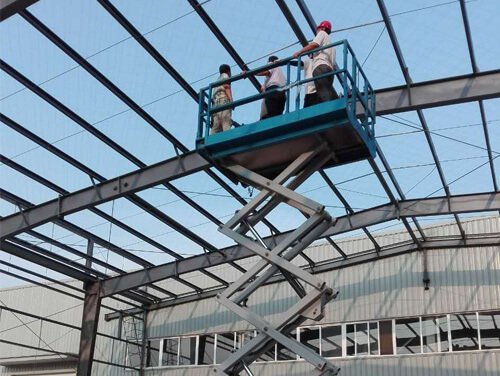Fire safety is more than a regulatory requirement; it is a critical factor in building design. England recorded 38,189 building fires last year, highlighting the ongoing risks, particularly in commercial and industrial buildings. While steel does not burn, extreme heat can weaken its structure, making fire-resistant design essential. With new fire regulations coming into force in 2025, developers and contractors must prepare for stricter compliance standards.
New Fire Safety Regulations: What You Need to Know
The 2025 update to Approved Document B consolidates previous amendments and introduces tougher measures. A key change is the transition from BS 476 fire testing to BS EN 13501, aligning UK standards with European classifications. This directly impacts fire resistance ratings for materials used in steel construction. Staying compliant isn’t optional, as falling behind could lead to costly redesigns and delays.
Key Changes in the 2025 Regulations:
- BS EN 13501 Adoption: The new standard provides a more comprehensive classification system for fire-resistant materials, ensuring that buildings meet consistent safety standards across Europe.
- Enhanced Testing Methods: The updated regulations include more rigorous testing methods to assess the fire resistance of materials, providing a higher level of assurance for building safety.
- Impact on Steel Construction: For steel construction, this means that all materials used in conjunction with steel must meet these new standards, ensuring that the entire structure provides adequate fire protection.
Protecting Structural Integrity with Intumescent Coatings
Although steel is non-combustible, it loses strength at high temperatures. Intumescent coatings provide vital protection by expanding when exposed to heat, creating a barrier that slows structural weakening. Under the updated standards, coatings must meet BS EN 13501 requirements, ensuring enhanced fire resistance and safer evacuation times.
How Intumescent Coatings Work:
- Expansion Under Heat: When exposed to high temperatures, intumescent coatings expand significantly, creating a thick, insulating layer that protects the steel from heat.
- Protection Duration: The duration of protection provided by intumescent coatings can vary depending on their thickness and composition, but they are designed to maintain structural integrity long enough for evacuation and firefighting efforts.
- Compliance with Regulations: Ensuring that intumescent coatings meet the new fire ratings is essential for compliance with the 2025 regulations, providing peace of mind for building occupants and owners.
Passive Fire Protection: Containing the Spread
Fire safety isn’t just about stopping a fire, it’s about limiting its spread. Fire-rated walls, doors, and ceilings help compartmentalize buildings, while fire stopping systems (such as sealants and barriers) prevent fire and smoke from moving unchecked. Properly designed passive fire protection keeps escape routes clear and minimizes structural damage.
Components of Passive Protection:
- Fire-Rated Materials: These materials are designed to resist fire for a specified period, allowing time for evacuation and firefighting.
- Fire Stopping Systems: These systems seal gaps and joints in fire-rated assemblies, preventing the spread of fire and smoke through these openings.
- Regular Maintenance: Regular inspection and maintenance of passive protection systems are essential to ensure they remain effective over time.
Sustainability and Fire Safety: Finding the Balance
Environmental concerns are shaping new fire safety practices. The UK’s 2025 ban on AFFF (Aqueous Film Forming Foam) fire extinguishers means buildings must adopt alternative suppression systems that meet both safety and environmental goals. Developers should also consider eco-friendly fire-resistant materials to align with sustainability targets.
Sustainable Fire Safety Measures:
- Alternative Fire Suppression Systems: Systems like clean agent extinguishers or water mist systems offer environmentally friendly alternatives to traditional fire extinguishers.
- Eco-Friendly Materials: Choosing materials with low environmental impact that also meet fire safety standards can enhance the sustainability of a building.
- Life Cycle Assessment: Conducting a life cycle assessment of materials and systems helps identify their environmental footprint and ensures that fire safety measures are sustainable over the long term.
Ensuring Safe Evacuations with PEEPs
Fire safety regulations don’t just protect buildings, they protect people. From 2025, Personal Emergency Evacuation Plans (PEEPs) will be mandatory for high-risk buildings, ensuring safe exit strategies for vulnerable individuals. For steel-framed structures, this means clear escape routes, well-marked exits, and fire-safe refuge areas.
Implementing PEEPs:
- Risk Assessment: Conducting a thorough risk assessment to identify vulnerable individuals and potential evacuation challenges.
- Customized Plans: Developing customized evacuation plans that account for the specific needs of all occupants.
- Regular Training: Providing regular training and drills to ensure that occupants are familiar with evacuation procedures.
Fire Safety in 2025 and Beyond
The landscape of fire safety is evolving, driven by regulation, innovation, and sustainability. Companies like Carnegie Group are committed to helping clients stay ahead of these changes, ensuring compliance while delivering fire-safe, resilient structures. Need guidance on the latest regulations? Engaging with experts who can navigate the evolving landscape of fire safety regulations is crucial.
Preparing for the Future
To prepare for the future of fire safety in steel construction, developers and contractors should focus on the following strategies:
- Stay Informed: Keep up-to-date with the latest regulatory changes and technological advancements in fire safety.
- Collaborate with Experts: Work closely with fire safety experts to ensure that all projects meet the new standards.
- Invest in Sustainable Solutions: Prioritize sustainable fire safety solutions that not only meet regulatory requirements but also contribute to a more environmentally friendly construction industry.
By adopting these strategies, the construction industry can ensure that steel buildings are not only safe but also sustainable and compliant with the evolving regulatory landscape.
Conclusion
Fire safety in steel construction is a multifaceted challenge that requires careful planning, adherence to new regulations, and a commitment to sustainability. As the industry moves forward into 2025, embracing these changes will be crucial for ensuring the safety of occupants and the longevity of buildings. Whether through the use of intumescent coatings, passive protection systems, or sustainable fire suppression methods, staying ahead of the curve in fire safety is essential for success in the construction sector.
Additional Considerations for Developers
In addition to complying with the new regulations, developers should consider the following best practices to enhance fire safety in steel structures:
- Design for Flexibility: Ensure that building designs allow for easy integration of new fire safety technologies and materials as they become available.
- Material Selection: Choose materials that not only meet fire safety standards but also offer durability and sustainability benefits.
- Community Engagement: Engage with local communities and stakeholders to raise awareness about fire safety and the importance of compliance with new regulations.
By integrating these considerations into their projects, developers can create safer, more resilient buildings that meet both current and future fire safety standards.
The Role of Technology in Fire Safety
Technology plays a significant role in enhancing fire safety in steel structures. Advances in materials science and engineering have led to the development of more effective fire-resistant materials and systems. Additionally, digital tools and software can help in designing safer buildings by simulating fire scenarios and optimizing fire safety systems.
Technological Innovations in Fire Safety:
- Advanced Materials: New materials with improved fire resistance properties are being developed, offering better protection for steel structures.
- Digital Design Tools: Software can simulate fire scenarios, helping architects and engineers design buildings with optimal fire safety features.
- Smart Fire Detection Systems: Modern fire detection systems can quickly identify fires and alert occupants, reducing response times and enhancing safety.
By leveraging these technological advancements, the construction industry can create buildings that are safer, more efficient, and better equipped to handle fire emergencies.
Conclusion and Future Outlook
As the construction industry moves forward into 2025 and beyond, fire safety will remain a top priority. By embracing new regulations, adopting sustainable practices, and leveraging technological innovations, developers and contractors can ensure that steel structures are not only compliant with current standards but also resilient and safe for generations to come. The future of fire safety in steel construction is about balancing safety, sustainability, and innovation to create buildings that protect both people and the environment.











